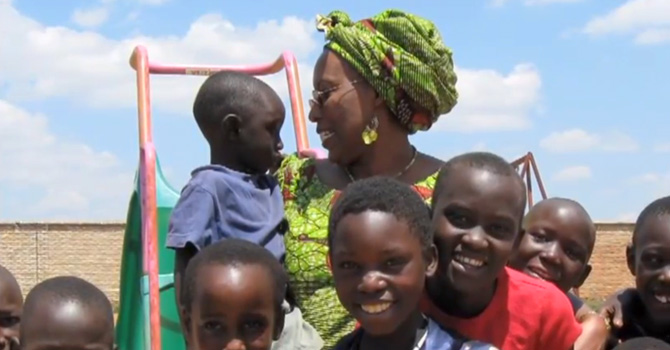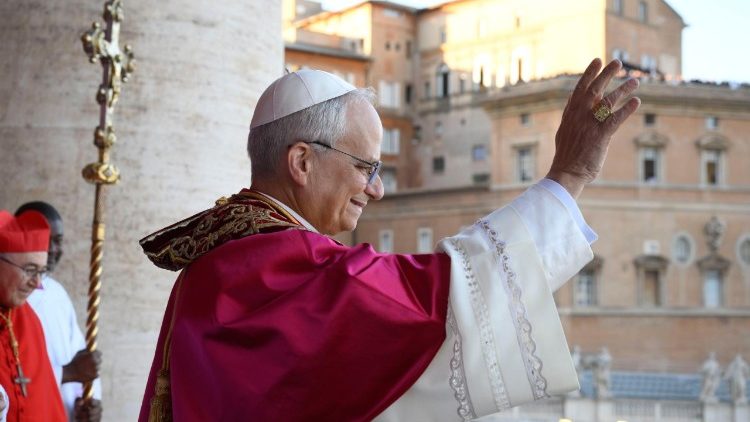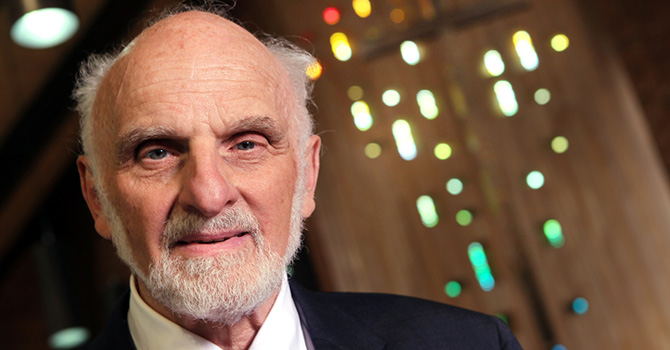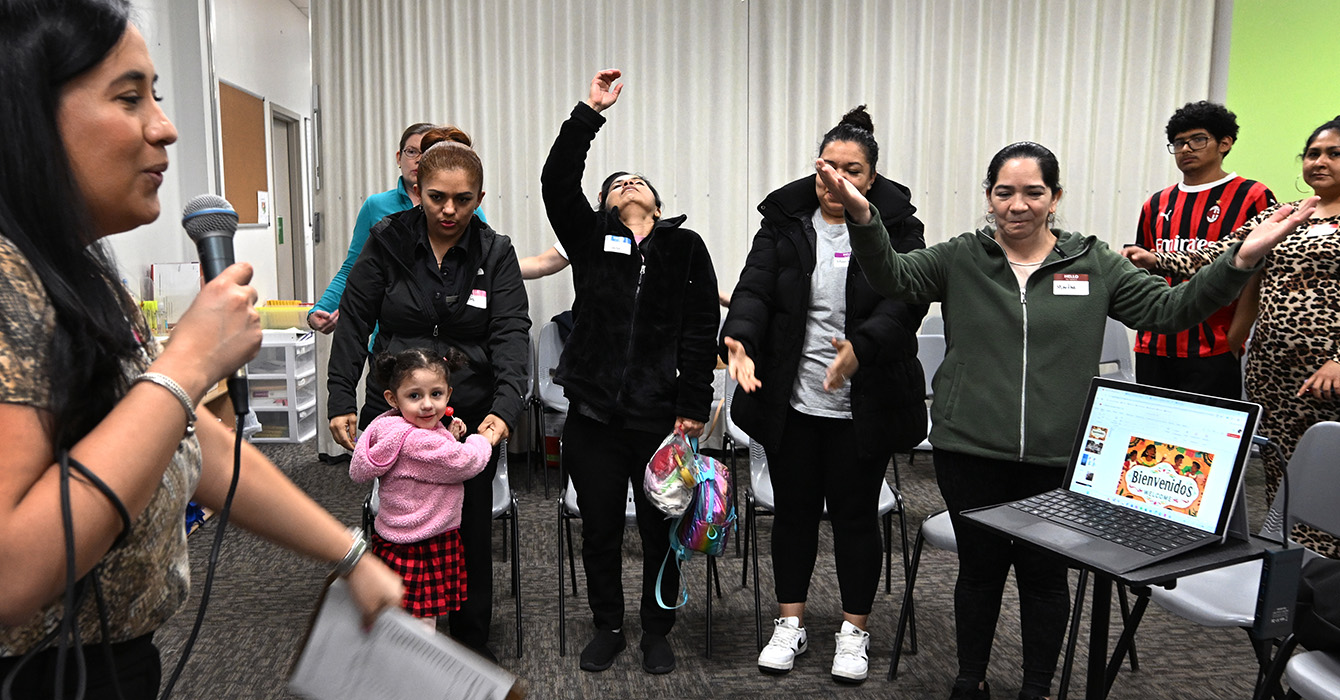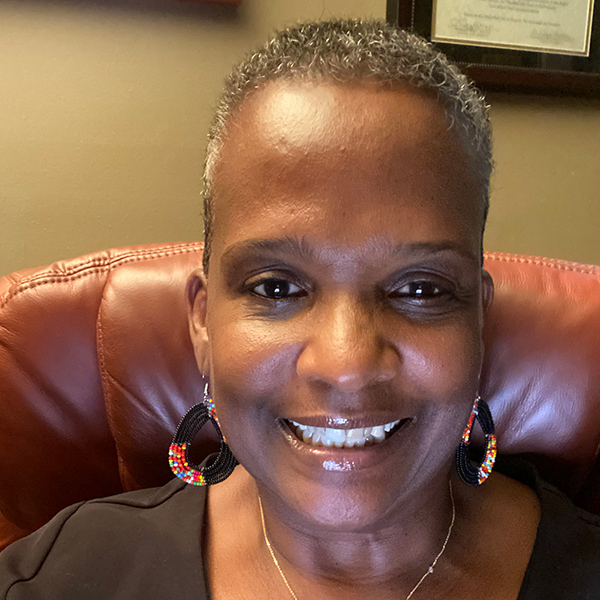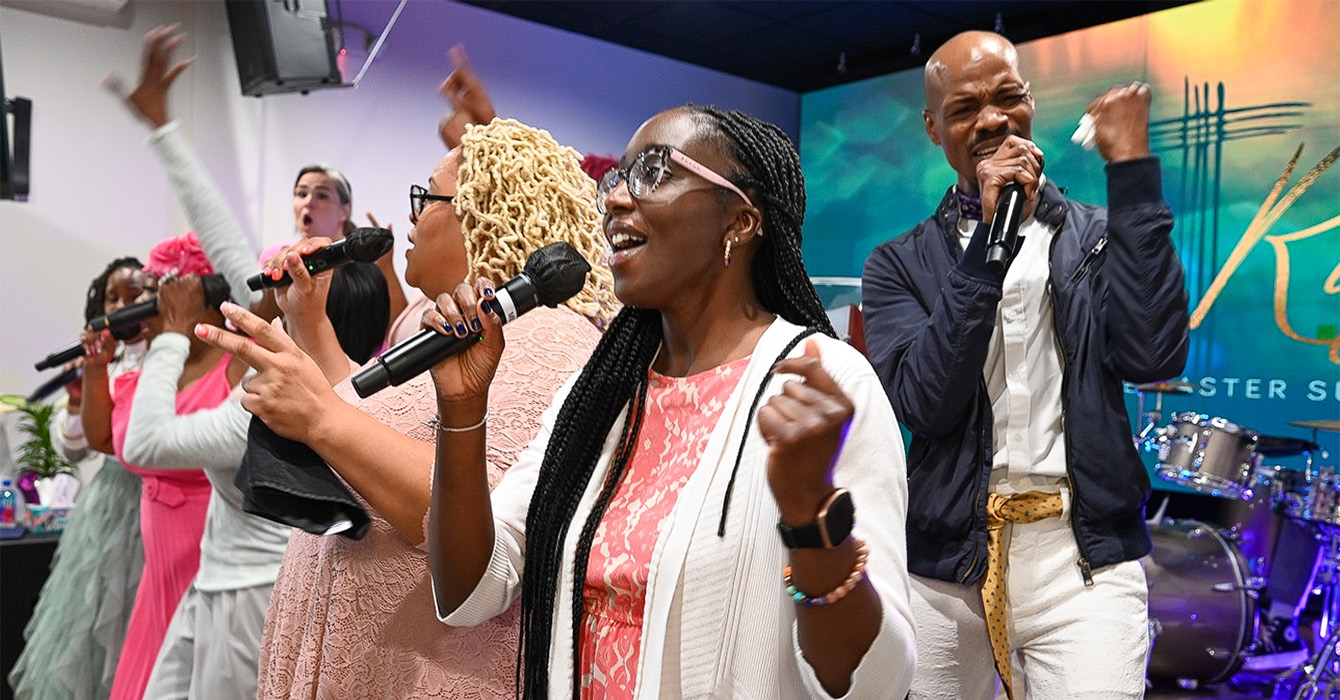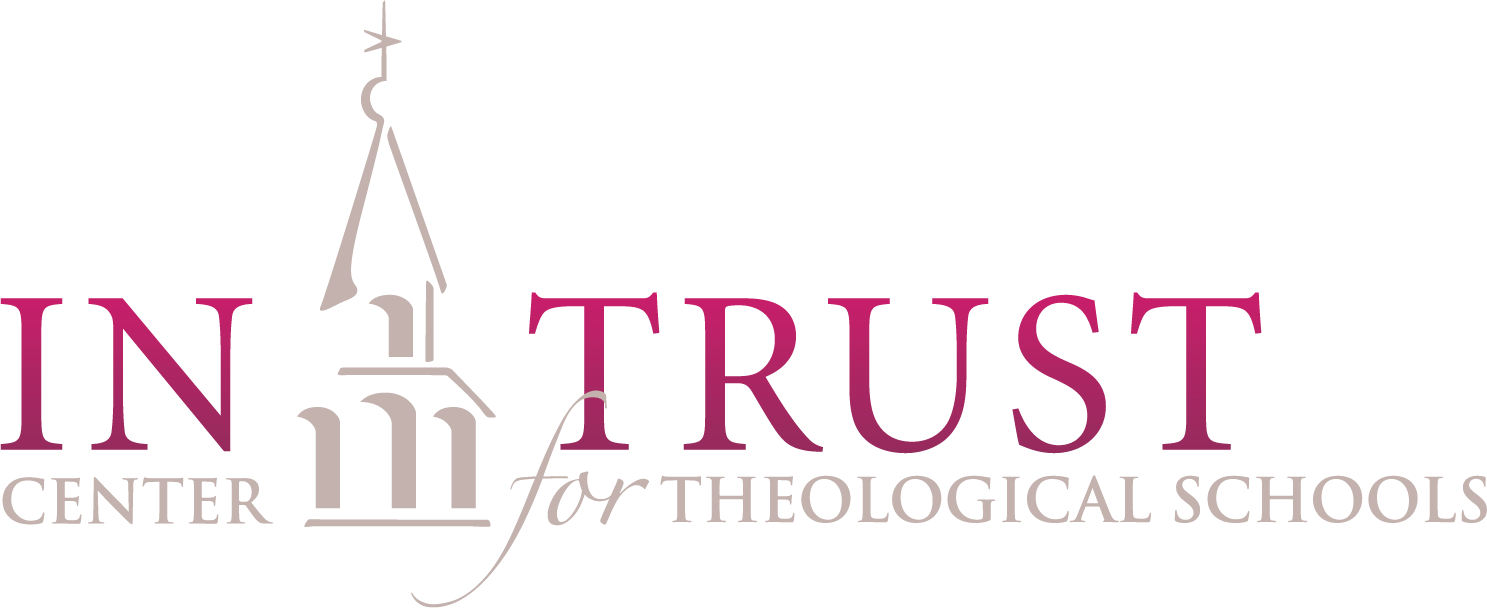L. Gregory Jones has spent most of his career leading in institutions.
He currently is the dean of Duke Divinity School -- for the second time. He founded Leadership Education at Duke Divinity, where he currently is a senior fellow. He has also served as vice president and vice provost for global strategy at Duke University, among other roles, and executive vice president and provost of Baylor University.
In June, he will become the president of Belmont University, a Christian university in Nashville, Tennessee.
Throughout his career, Jones has been thinking, writing and speaking about leadership -- in particular, leadership in Christian institutions. One of the key concepts he developed is “traditioned innovation,” the idea that a good leader draws from the past to lead innovatively into the future.
“It’s a way of thinking and living that holds the past and future together in creative tension,” he said. “Our feet are firmly on the ground with our hands open to the future, so it’s a way of thinking and living that’s simultaneously drawing on the best of our past and oriented toward the future.”
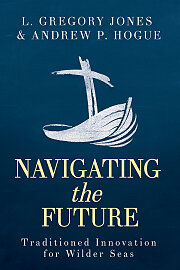 In his latest book, “Navigating the Future: Traditioned Innovation for Wilder Seas,” Jones and co-author Andrew P. Hogue explore this idea and offer guidance for leaders in an uncertain time.
In his latest book, “Navigating the Future: Traditioned Innovation for Wilder Seas,” Jones and co-author Andrew P. Hogue explore this idea and offer guidance for leaders in an uncertain time.
Jones, an ordained United Methodist elder, has published more than 200 articles in a variety of publications, including Faith & Leadership, and has written more than a dozen books.
He spoke with Faith & Leadership’s Sally Hicks about the book and how he plans to approach his new role. The following is an edited transcript.
Faith & Leadership: You write about “traditioning” and “innovating.” Why are they both necessary, and how do they interrelate?
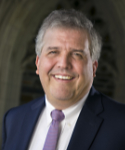 L. Gregory Jones: It’s not sequential. You don’t just start by learning the past and then go to the future, nor do you start with the future and then go back to the past.
L. Gregory Jones: It’s not sequential. You don’t just start by learning the past and then go to the future, nor do you start with the future and then go back to the past.
It’s actually a process of holding them together, where you’re consistently going deeper into the past -- a traditioning process -- while you’re also thinking about how to improvise into the future.
That’s why we like the image from jazz -- that you’re always learning new pieces of the past while you’re listening to those who are playing around you. That makes beautiful music for the future.
It’s a lifelong process, so we emphasize the importance of learning and a growth mindset.
F&L: You describe the need for traditioned innovation as urgent. Why?
LGJ: We’re caught right now with really destructive thinking about institutions and our life together.
What we tend to do is either cling to the past in a kind of traditionalism, which is just a carrying forward of the dead faith of those who have gone before us, whether religious or secular, a sense of clinging to the past nostalgically, or [we reach for] a kind of fantasy that we can just start from scratch, destroy everything and then start over again.
Those are polar opposites, yet they seem to too many people to be the only options on offer.
F&L: You’ve written about “starting at the end,” which seems counterintuitive. What do you mean by that?
LGJ: Beginning with the end means you’re going to start out with what you’re for, what you’re oriented toward.
In Christian terms, we talk about it as the reign of God. And when you’re oriented toward that, it’s going to stimulate the imagination. It will also help you see the gap between where we are now and where we aim to be. That then gives you that sense of imagination of what we need to be doing to make things better.
But you’re going to start with the end and design backward, and in that process, then, you’re also going to say, “And how do we build on the best practices and convictions of our forebears while also casting aside the worst of those practices and convictions and those that are no longer relevant?”
F&L: You’ve touched on this a little bit, but explain the role of institutions in the broader end of human flourishing.
LGJ: They’re necessary -- and not just as a necessary evil. They can also do a lot of good. When you see healthy institutions, whether those be families or schools or businesses or health care organizations, they make our life possible.
Caring for institutions well is really crucial for any healthy community or any healthy society.
They become things we can take for granted in a good way, not in a bad way. Think of them as scenery in a play; they’re part of what enables all sorts of good things to happen.
We tend to notice them most when they fail us, yet when they do fail us, we find that our lives are impoverished as a result of that, and so we long for institutions that can really make life possible.
Unfortunately, we’ve had decades now of taking them for granted in a bad sense, becoming cynical about them and hating them, actually. So you hear a lot of fantasy talk of, “Well, let’s just start over.”
I’ve been humbled when I’m talking to people who have been in Iraq or Afghanistan, for example, or in areas of Africa, and they say, “Don’t ever take your institutions for granted. It’s so much harder to create than it is to preserve.”
Now, preserving doesn’t mean you just hold on and clutch. That’s where the ongoing innovation needs to happen.
I love the image that we write about [in the book] that John Gardner provided a half-century ago, in the early 1960s, when he said that part of our trouble is we’ve developed a mechanical or mechanistic understanding of organizations.
We think about org charts, and we think in mechanistic terms. What he suggests is to think of them in organic ways rather than in mechanistic ways.
Now, that actually happens to be a more biblical way of thinking, if you think about the ways in which Old Testament prophets used metaphors of vineyards and then Jesus talks about the vine and pruning.
Institutions are always changing. They’re always adapting. They’re always evolving. They’re growing. They’re declining. They’re dying. They’re being birthed. And we need those organic metaphors that enable us to care for them far better.
F&L: How does imagination help you with that sense of tension that you’ve got two things that are hard to pull together?
LGJ: When you begin with the end and you start with this big, hairy, audacious goal -- the reign of God -- that should stimulate the imagination.
The end of Ephesians 3 has this wonderful setup verse: “Now to the one who by the power at work within us is able to accomplish abundantly far more than all we could ask or imagine …” (Ephesians 3:20).
It invites this kind of really bold imagination, and the reason why the traditioning process is so powerful is it reminds us we’re not the first ones to try to dream. We’re not the only ones who’ve had bold imaginations.
Our colleague Kavin Rowe’s book “Christianity’s Surprise” is about creating the first hospitals in the history of the world, and the first orphanages, and all of a sudden, you realize what an impact that it’s had in extraordinary ways.
That kind of imagination, quite frankly, I see more often now among Christians in the Majority World than I do in the U.S., and that’s a sign that we’ve settled, we’ve lost that kind of creativity and expectation.
When I’m teaching about traditioned innovation, I’ll play John Coltrane’s amazing rendition of “My Favorite Things.” You know, you’re listening to John Coltrane, the great saxophonist, and he’s playing it. You hear [the melody line] “These are a few of my favorite things,” from “The Sound of Music,” and you go, “Oh, I know that tune.”
And then he takes you on this unbelievable journey, and eventually you’re going, “Is he still doing a riff on ‘My Favorite Things’?” And then he brings you back to the melody.
It’s that audacious imagination and creativity, the beautiful music that emerges -- that’s what we’re called to be about.
F&L: As a person in the storytelling business, I’m curious about the emphasis on storytelling. What does that do for the imagination?
LGJ: Quite frankly, we haven’t been very good at it.
In the first instance, we’ve got to reclaim the storytelling of the Bible that is really imaginative and extraordinary.
I’ll give you an example from somebody you’ve interviewed before, my friend Maggy Barankitse. Maggy has faced unbelievable hardship and difficulty in Burundi, and she’s set it all within the context of the biblical story.
That led to this unbelievably imaginative place called Maison Shalom, where she helped equip children. Telling her story is extraordinary; telling her story as set within the larger story of the Bible is even more extraordinary. And then there’s a further twist.
About five years ago, Maggy, who had once been called the mother of the country by Burundi’s president, had to flee to Rwanda. She left everything behind and had to basically start over again.
But she had a larger story that she situates her life in. When I saw her at a conference a couple of years ago, I knew all the struggles she had been going through. When I saw her, I went over to her, and I got my best pastoral voice on and turned my head a little bit, and I said, “Maggy, how are you?”
Her eyes brightened, and she gave me a bear hug, and she said, “You can’t stop God’s love.” Then she said, “Have you ever heard of the story of Joseph?”
I said yes, and she said, “What others intended for evil, God has intended for good” [invoking Genesis 50:20].
I thought, “Here’s a woman who is unbelievably resilient, and she situates it within storytelling.”
[In Rwanda] immediately what she started doing was innovating. She had bought a conference center in a hotel, and she was using the proceeds from the hotel to do training of refugees so that they could learn English and go to college.
I’m so inspired by that, by her story. And that’s the kind of storytelling that we need to do.
F&L: How has the framework of traditioned innovation changed since you first wrote about the mindset/practice on Faith & Leadership?
LGJ: I would highlight three dimensions that have developed most significantly. First, I am more aware now of how much more fragile institutions are than they were even a decade ago, and how crucial and urgent it is simultaneously to preserve the best of what they have been and engage in significant innovation.
Second, I am more focused on “traditioning” as an active and ongoing task to ensure that we avoid the twin pitfalls of traditionalism and fantasy.
And, third, I now focus on two additional “i” words as crucial components of faithful and effective innovation: improvisation and imagination.
F&L: How have you applied that to your leadership at Duke Divinity School?
LGJ: Traditioned innovation has actually been at the heart of how I have led. [The mindset/practice] helped shape the phrase, and now it’s how I engage in my understanding of leadership.
When we had the economic meltdown in 2008, it became even clearer to me. I realized, as I was trying to figure out how to keep the school moving forward, that roughly every 10 to 15 years the Divinity School had engaged in innovation that also had continuity with its identity.
When I came back two and a half years ago, that understanding of traditioned innovation became important, because there had been the sense among many in the school that the school had perhaps drifted a bit and hadn’t been as focused on key aspects of the identity -- the appreciation for congregations, for example, or the importance of rigorous academic work in connection to the university.
What I did in some of my first meetings coming back in 2018 was to list core aspects of the school that reflected our tradition at our best and then how we would articulate that in a new key.
Part of that was to remind long-standing members of the community, “This is who we are,” and also point to the things I thought we needed to do to adapt them and be creative moving forward.
Interestingly, when I interviewed with the board of trustees at Belmont, they really focused in on the idea of traditioned innovation and things I’d written about [it] and said that’s what they really wanted to see in their next president. And that was part of the appeal and the attraction.
They want to [innovate] in ways that honor the best of their history, going back to its founding 120-plus years ago, 130-plus years ago by two women. That innovative spirit is deeply embedded in its identity, and yet that’s part of where they want to go in the future as well.
F&L: As you go to a new institution, how do you bring traditioned innovation to that role?
LGJ: It means a lot of listening and learning. I want to learn the history of Belmont, the kind of lifeblood and sense of its identity that’s brought it to this place.
I’m helped by that because it’s a Christian university, and so there are threads that go back to earlier academic institutions that preceded it and the larger scriptural imagination that we’ll be focused on.
It will be in that process of listening and learning that I think I’ll also see where the key opportunities are for the future.
F&L: Is there anything that I haven’t asked that you would want to add?
LGJ: I would just say that, as Kavin Rowe articulated well in a series for Faith & Leadership a number of years ago, traditioned innovation is a biblical way of thinking. Only God creates out of nothing, and so the rest of us are always creating in conversation with the past.
My hope is that we can develop that kind of constructive attitude, those habits of thinking and living that are focused on the future and enabling and flourishing, while unlearning the destructive traditionalist aspects of our past in a way that enables all people to flourish and to discover their role in the larger story of God’s love.




